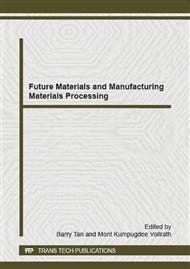p.77
p.83
p.89
p.97
p.103
p.109
p.115
p.119
p.125
Evaporation-Plastic Shrinkage-Cracking: Overview of Approaches and Discussion
Abstract:
Plastic shrinkage is a complex phenomenon to understand and to control. This volume contraction at early age is accentuate by aggressive climatic conditions (high temperature, windy weather, low humidity, etc...) and can lead to cracking, which affects the aesthetics and especially the durability of concrete. This paper presents an overview of two principal approaches characterizing concrete plastic deformation: The qualitative approach based on the study of shrinkage consequences and their interpretations in order to understand the behavior of concrete at this critical age, The approach has been called quantitative is mainly founded on the quantification of the deformation capacity of the material and its comparison with plastic deformations. Also, in order to enrich the discussion, this paper will present the remarks that we were able to notice, based on results in the literature.
Info:
Periodical:
Pages:
109-114
Citation:
Online since:
February 2015
Authors:
Keywords:
Price:
Сopyright:
© 2015 Trans Tech Publications Ltd. All Rights Reserved
Share:
Citation:


